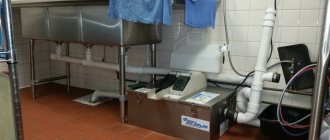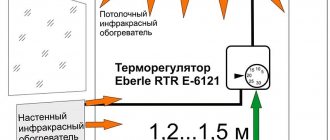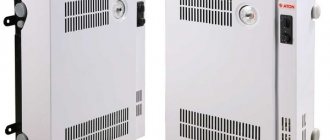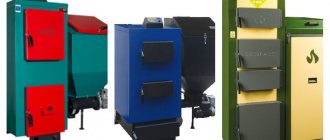Water supply schemes with a storage tank
If, for example, the water supply system of a private house with a storage tank is such that the natural flow of water into the well or well is small, then it is necessary to provide a certain supply of water in case its consumption suddenly increases. During the day, water usually accumulates in such a tank, and in the evening rush hour it is intensively consumed when every family member wants to wash. Sometimes water is supplied to a residential building at certain hours. In this case, the storage tank for water supply will help to collect the required amount of water so that it can be used at any time and without interruption.
SAN SAMYCH
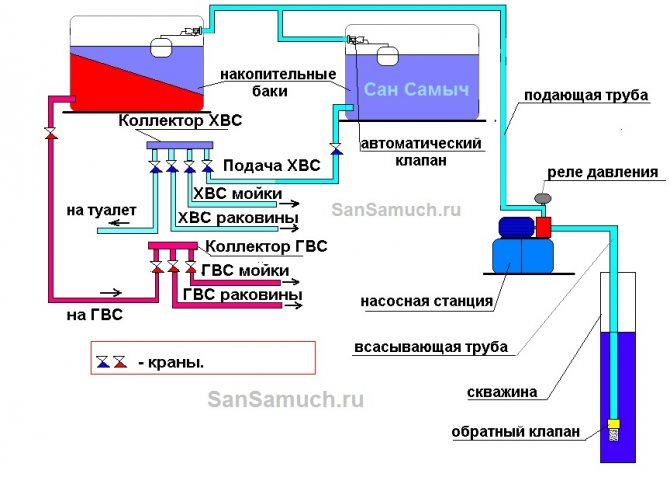
Accumulation circuit with two tanks
I believe that the accumulative water supply system of a country house or summer cottage most fully corresponds to the realities of our life. No one can guarantee you that your light will not be turned off or the pump will not break.
The insurance in this case can be a supply of water for one or two days for the necessary needs.
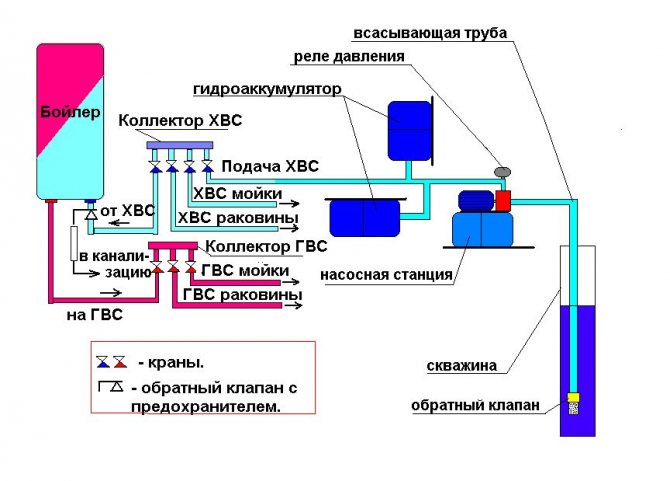

Cumulative circuit with a pumping station and a GA.
The simplest, but not the cheapest solution is to add one or more hydroaccumulators (HA) to the pressure water supply system so that the total supply of water (namely water, and not the volume of HA) is not less than 100 liters. This is enough for two people for two or three days without frills: rinse your hands, cook food, wash dishes. When installing a GA, certain conditions must be met:
- The installation site must be warm. In the room for the GA, the temperature should not fall below zero. Moreover, you can get off with the insulation of the GAs themselves, but no one will give you a guarantee for their trouble-free operation, except for the GA sellers.
- From the pump to the GA, the pipeline must have a minimum resistance. Those. the pipe should be of a larger section than the main wiring around the house.
- The pressure in the air part of the GA must be controlled and maintained at the required level (1.5-2.0 bar).
- The debit of the source (well or well) must be greater than the total volume of water in the HA. Otherwise, the pump will thresh and burn out. And so that all the same it does not happen, it is desirable:
- The pump must be protected against idling.
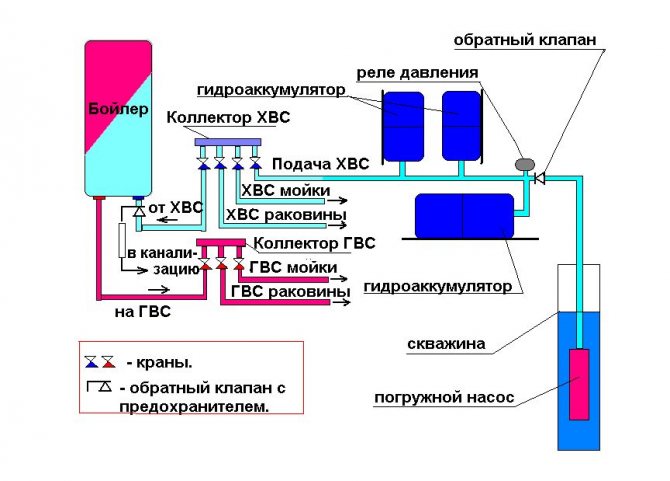

Accumulative circuit with a submersible pump and GA.
In addition to the above restrictions, a significant drawback of such a water supply system at home is the inability to determine the amount of water remaining in the supply. Although, if you put a pressure gauge in front of the distribution manifold, according to its readings, you can indirectly judge the remaining stock. I would not recommend such a water supply system to summer residents, tk. it is almost impossible to completely drain the GA. Well, the owners of wells and wells with a small inflow of water will have to come up with something else.


Storage tank made from a plastic barrel.
For example, put a simple storage container, a plastic barrel, or a special canister (these are sold) in the attic. I would recommend putting two of them: one for cold water, the other for hot water. A container with hot water will prevent cold water containers from freezing in the most severe frosts. And with sufficient roominess and proper insulation, even if the electricity is turned off (if we are talking about the built-in heating element), it will cool for a very long time (several days, checked).
You can heat water not only with a heating element, for this you can use both a heating boiler and any stationary stove, which will not be superfluous in places where problems with electricity are constant.
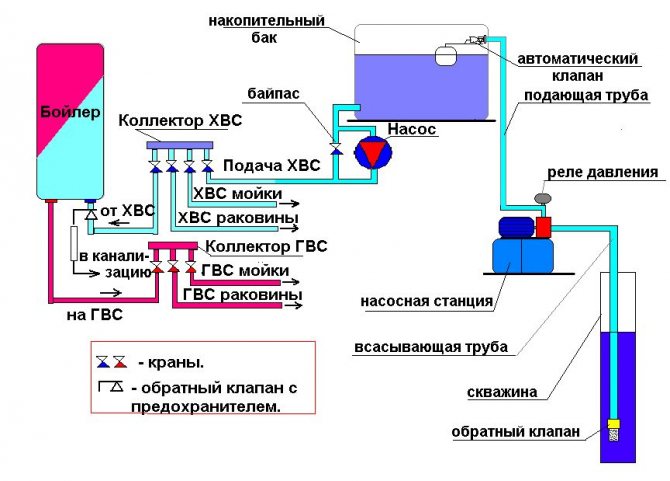

Cumulative circuit with a pumping station.
A significant difference between this water supply scheme from the previous one is that the diameter of the supply (supplying water) pipeline can be small (16-20 mm, just do not forget that the smaller the pipe diameter, the faster it freezes), and the pipe diameter for distribution around the house should be larger (20-32mm) to reduce the resistance of the pipeline. Experience shows that the difference in height of 5 meters between the bottom of the tank and the level of the mixer is enough for water to flow from the tap with a decent pressure. Although, no one bothers you to put a pump to raise the pressure in the distribution system at home, and in case of a power outage, make a bypass.
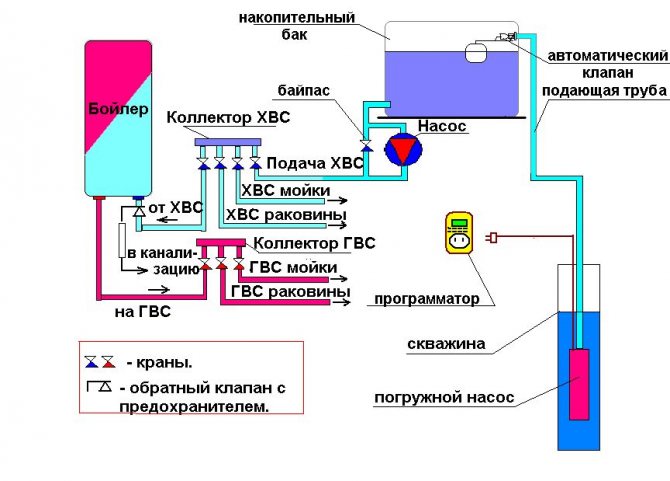

Accumulation circuit with a submersible pump controlled by a programmer.
If everything is in order with the inflow of water from your source, then, in principle, you do not need to know how much water is in the containers now. You can put an automatic valve from the toilet cistern with a side connection at the entrance to the supply pipe tank, and it, together with a pump and a pressure switch, will keep your tanks full.
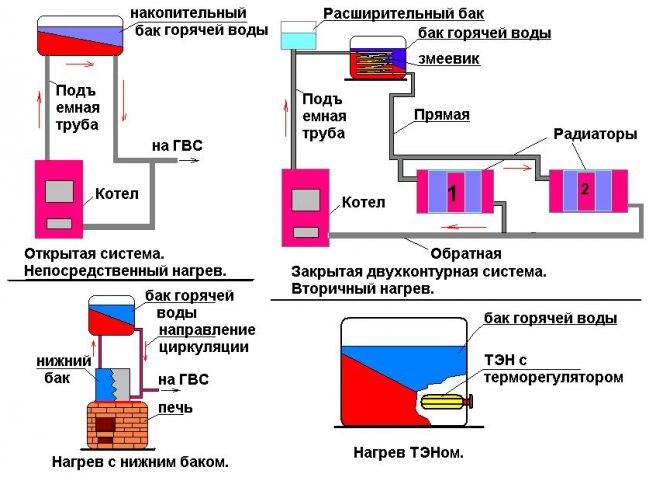

Methods for heating a hot water storage tank.
This automatic valve will not be superfluous even with a small flow rate of a well or a well, in order to prevent overflow of tanks (and I would also put an overflow pipe, just in case). Because in this case, the pump will turn on and off automatically, according to the schedule you set. For this, a multi-programmer is used, thanks to which it is possible to set the time for turning on and off the pump with an accuracy of one minute for the day ahead. (A very useful thing in the household. In general, I am not indifferent to automation. For reference: an average pump pumps out 10 liters in 1-3 minutes, depending on the lift height.)
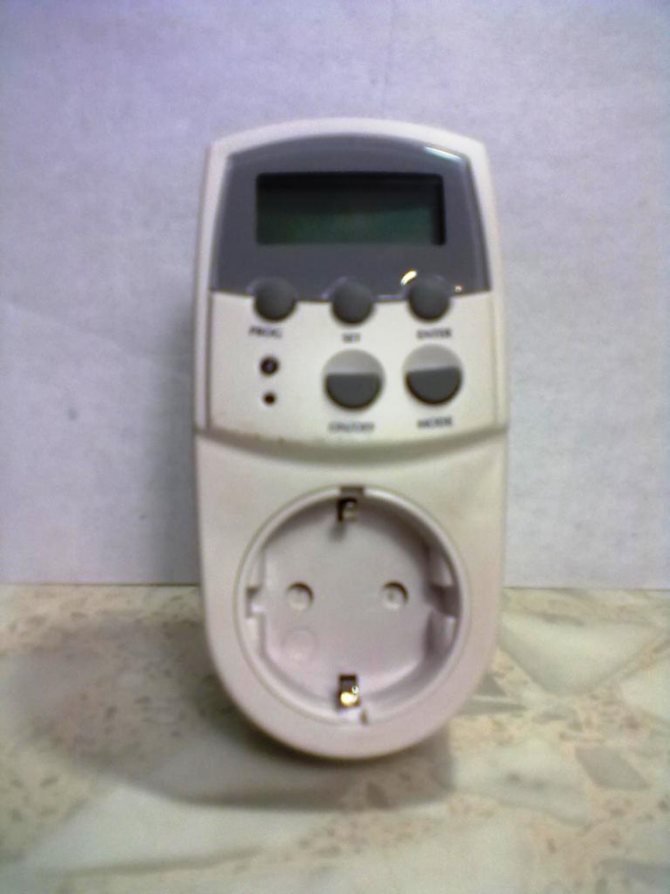

Programmer.
It is clear that in this case I would like to know the filling level of the tanks for control. What can you suggest here as a solution. The simplest thing is to find a more accurate pressure gauge with a division value of at least 0.05 bar, and preferably 0.01 bar. Then the level in the tanks can be determined with an accuracy of 0.5 meters (0.05 bar) or 0.1 meters (0.01 bar).


Programmer2
I could not find such a pressure gauge. I made a level sensor in tanks using the conductivity of water. To prevent anyone, God forbid, knocking, I used a voltage of 12 volts and a push-button non-latching switch. Pressed - looked, released - turned off.


Homemade level sensor.
You can also make a one-way U-shaped gauge. This requires a transparent flexible tube of small diameter (from a dropper). We bend it in the shape of the letter "U" and fix it on any flat vertical surface (on a wall, plywood, cardboard) with clamps or tape. We muffle one of its ends: bend and tie it with a thread or insert a cork. The other end must be connected to a tank or pipe leading from it. Water, having poured into the tube, will leave an air bubble in the plugged area, the height of which depends on the water level in the tank. The higher the level in the tank, the more the air will be compressed in the plugged section of the tube. Of course, you first have to calibrate this pressure gauge, i.e. mark the previously checked levels in the tank on the straw with a marker. But then - use it to your health, and a power outage will not hurt. Of course, this pressure gauge can measure only small, up to 1 bar, pressure.


Level indicator for storage tanks.
I could tell you how to make a diffmanometer with a mechanical or electromechanical drive, but it seems to me that the above examples are enough to solve the problem of determining the level in tanks. The rest is an order of magnitude more complicated, we will leave this matter to specialists.
I have a negative attitude to the location of the storage tanks of the water supply system in the underground or basement, because in this case the rule applies: "no light - no water", and I do not see any point in this. But there are situations when such an arrangement of the tanks is entirely justified.
A nodding friend of mine steals water from neighbors at night. At night, he throws his pump into their well and fills the storage tanks in the underground. Further, the water is distributed using a pumping station. He tells his neighbors that he has a well in the subfield. God will judge him.
Collectors combining pressure and storage circuits.
Other acquaintances, who do not have a well or a well on the site, use the gardening plumbing, which, alas, does not always have water (or it may simply not reach them). They always keep a tap open, from which water is brought into a storage tank located in the basement. Further, a standard scheme with a pumping station.
Unfortunately, I am not aware of your specific situation, but I sincerely hope that my advice has helped or will help you in organizing the water supply system in your home.
You may be interested in similar materials:
- Pressure water supply system. I would like to clarify that the division of water supply schemes into pressure and storage is very arbitrary, because any real water supply system ...
- Basic water supply schemes. Basic water supply schemes. Frankly speaking, in its pure form I know only two possible water supply schemes: pressure and storage ....
- How to keep the heating system from freezing. Winter is approaching its finale. Frosts subside. The sun is warming up more and more. And I would like to "hammer the last nail" into the topic ...
- Choosing pipes for water supply. For any person starting a bathroom and kitchen renovation, the question arises of the choice of material, namely, which pipes to use? That was…
Storage tank volume
The volume of the storage tank directly depends on the number of people living:
- Per person, a volume of water not exceeding 200 liters is considered sufficient for everyday household and economic needs.
- For country water supply, which does not provide for some items of water consumption, for example, washing, to calculate the volume of the tank, one should proceed from the norm of not more than 80 liters per day per person, or even less. For a family of 2-3 people, a storage tank for water supply of a dacha of 200 liters is quite suitable.
- If water is used only for food, drinking and washing dishes, as well as morning and evening washing, then even 30 liters per person may well be enough.
Water supply scheme of a private house with a storage tank:


How to choose a drive
When choosing a tank, you need to pay attention to two main parameters: volume and material of manufacture.
Volume
A storage tank should not be confused with a hydraulic accumulator. And the point is not even that the second is a pressure vessel that regulates the pressure in the network due to the pressure of compressed air on the rubber membrane.
The maximum volume of the accumulator is only 100 liters, the standard is 24-50 liters. This is very little to supply water as usual in the situations described above.
To understand how much capacity you need, you need to analyze the following factors:
- Required water consumption per unit of time. It can be calculated approximately by adding up the nominal consumption of all appliances available in the house - mixers, toilets, a washing machine and a dishwasher. Another calculation method suggests multiplying the daily water requirement of one person by the number of family members. But this need is different for everyone and also depends on the availability of amenities in the house. It can be 60 or 200 liters per day. Therefore, focus on your habits and conditions.
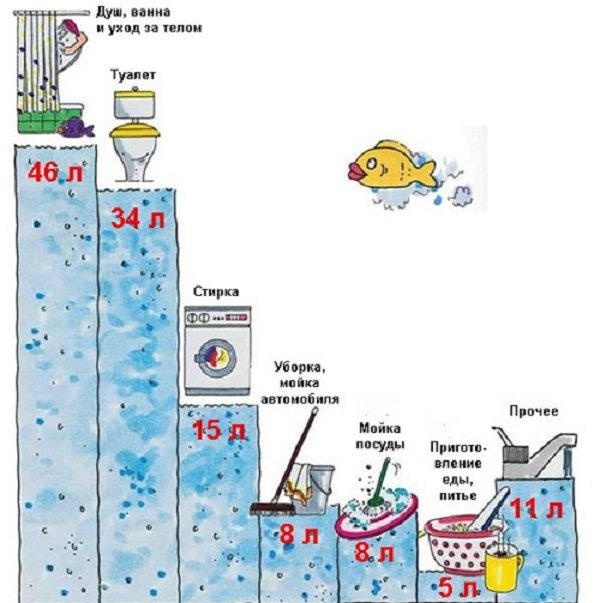

- The performance of a stand-alone source or the schedule of a centralized system. For example, if the water or electricity is turned off for a maximum of a couple of hours, a 100-liter barrel may be enough for you, and it is quite another matter if this happens often and for a long time. It also makes no sense to install a five-cubic capacity, if your well can pump no more than 500 liters into it per day.
Material
If you are planning a drinking water supply for a summer residence, the storage tank should be made of materials that do not react with water and do not affect its taste, smell and quality. And this is either stainless steel or food grade plastic.
More and more often, preference is given to plastic, since it is much cheaper and more durable, especially when it comes to underground storage. In addition, it is light: even a tank of impressive dimensions can be installed with your own hands without involving a bunch of assistants or special equipment.
To roughly navigate the prices, look at the options presented in the gallery:
As you can see, stainless steel tanks are many times more expensive. It is more profitable to buy plastic, but you need to make sure of the quality of the material and its purpose - for storing drinking water.
Storage tank installation methods
The storage tank can be installed underground, openly and inside the house. With the open method, the tank is installed on a hill, due to which it will function as a water tower and make it unnecessary to use the pump.
Only a small container is installed inside the house, which does not require much space.
An arbitrarily large tank can be hidden underground, and above it, for example, garden beds can be placed. But for an underground installation, additional work will be required.
In addition, the container must have a certain configuration. The plastic tank should be round or ribbed, with technological holes for inspection and cleaning. If a "eurocube" is used, then a concrete shell will be required for it, since the mesh fence will not save from soil pressure.
Water supply scheme with a storage tank:
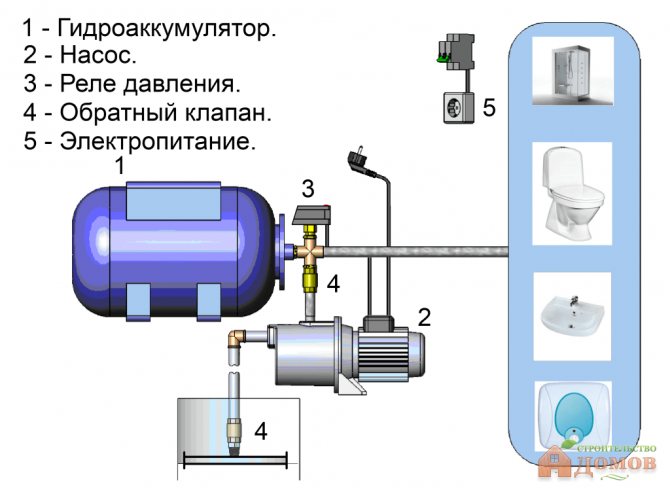

Tank automation and cleaning
These aspects must be taken into account even when installing the container. If water is supplied with a normal pressure and a certain frequency, then the issue can be quite simply solved by installing a float valve for the toilet on the supply connection. When filling the container, it will cut off the supply, and the water will not overflow.
If water is taken from a shallow well or a poorly filled well, then to supply it, you need to use a drainage pump equipped with a float switch. When the water level in the well drops to a critical one, the pump will automatically turn off.
If the storage tank for water supply gives water through the pump, then a float switch or other switch inside the tank itself is required. When the water level drops to a minimum, the pump will turn off. You can duplicate it with a water level, which is useful when using a washing machine, to make sure that it has enough water to wash it.
What is a heating buffer tank?
In the selection process, not only the correct calculation is considered important, but also the experience of use. I always look for the relevant information about each battery, make a comparison and then start looking for a supplier. Several factors affect the choice of the drive: rather expensive cost, a small number of days with very low temperatures. That is why I try not to install a storage device for several tons of water, which at the same time has a significant cost and is heated very rarely. Moreover, it is quite difficult to heat tons of water and takes a certain amount of time. As a result, heating is not entirely justified. Many years of experience of use has managed to prove that the optimal volume, which ensures the proper level of comfort, is 1 ton per 200 sq. M. area of the house. Accordingly, I can make the following calculation: 100 sq. M. - 0.7 t; 300 square meters - 1.3 tons.
The use of solid fuel cotta is advantageous. Together with the buffer tank, it operates according to the principle: it is better to heat it once, but good. From my experience, I can say that you need to select a boiler in which at least 2 times more power than heat loss. If there is a need for a 15 kW boiler, it is better to immediately take it for 40. The solid fuel type boiler is the most convenient to use.
It is also worth noting that it is not always practical to create a buffer tank on your own.Since the device itself is very complex and there is a need for an additional level of protection against damage, thermal insulation and a proper coil that carries out good circulation of the liquid, it is better to buy a ready-made container. If you doubt your abilities, then I recommend buying a ready-made one.
The main element of the tank is a thermal storage material that is able to distribute the heat supply and store it. This battery can be of several types:
- Liquid
- Steam
- Thermochemical
- Solid state
- With multiple heating elements
The storage tank raises the water level, which is used for heating. After connecting, there is more water a couple of times. The battery heats up and distributes heat as needed. Such coordination in work ensures continuous circulation of hot water even when the boiler is off.
Almost every type of boiler has several phases of operation. There are 3 of them: initial, middle and final. Such processes provoke significant changes in temperature levels. Thanks to the drive, this factor can be avoided. If a stage of intensive combustion occurs, the storage device is able to take the excess amount of heat to itself as a priority. During attenuation, on the contrary - give it to heating. Thanks to the mechanical adjustment, it will still not be possible to burn all hazardous substances.
During operation, hazardous substances are released into the atmosphere. The boiler is of the standard type with an air valve. It completely prevents oxygen supply to the fuel. This can provoke the release of harmful substances into the air. The storage tank is able to reduce the total amount of emissions of harmful substances. The heat accumulator saves a sufficient amount of fuel. In addition, it protects the heating from overheating.
I would like to put some emphasis on the fact that the liquid is heated by means of fuel. In a gas boiler, it is evenly distributed. In other installations, the constant burning process can cause a decrease in heat supply. After analyzing the sales market, I was able to determine that most of the drives that are sold have holes that require further connection of pipes. This greatly simplifies the installation process.
The nuances of installing a storage tank
To prevent the storage tank from becoming dirty for a longer time, a water filter must be installed at its inlet. Usually it is mesh, but for large containers (more than a cubic meter) and with contaminated water, it is better to replace a rapidly clogging mesh with a centrifugal filter pump or a cyclone filter. Despite the high cost, water supply with a storage tank and a pump will be more economical to operate.
In the tank installed on the podium, you need to make a drainage hole through which the sludge will drain during flushing.
In the case of an underground arrangement, the tank is cleaned through the inspection hatch, from where dirt is removed from the bottom with a bucket. It is best to use a flat-bottom container with a slight slope for this, in which sludge will accumulate just under the inspection hatch, and it will be easier to remove it.
So that the mud does not rise from the bottom of the tank when water is supplied, the inlet pipe can be completed with a garden or shower head, or a mesh filter can be installed on the outlet pipe located inside the house for ease of maintenance and cleaning at any time.
Have you installed a storage tank as an addition to the water supply system? Or do you think this is an unnecessary detail? Share your opinion in the comments.
Types of containers and purposes of their application
First, let's define the terminology.
It is used as a reserve source of water, as well as a buffer tank in an autonomous water supply system with water supply from a well or a well: the accumulator smooths out pressure surges when the pump is turned on and makes these inclusions more rare, saving the resource of the device.
| Picture | Description |
| Vertical and horizontal accumulators | It provides an overpressure water supply, which is provided by an air reservoir in its housing. |
| Horizontal electric boiler |
It compares favorably with the flow-through with lower power requirements for the heat source. The boiler can have its own heating elements (tubular electric heaters) or use a coolant circulating in a closed loop between it and the boiler to heat water (the so-called indirect heating boiler). |
| Storage tank with gravity feed water | Unlike a hydraulic accumulator, the pressure in the water supply system is created only due to the difference in height between the water level in the tank and the draw-off points, therefore, storage tanks are usually installed in an insulated attic or under the ceiling of a residential floor. |
The tank can be connected to the system in two different ways: by positioning it at a high elevation or at or below ground level.
Such a water supply scheme for a house from a storage tank is practiced mainly in cases where there are no appliances in the house that need a good pressure, and the residents' need for water is minimal - to wash, wash dishes, etc.
And also with frequent power outages. Because water from a tank installed on a roof, attic or overpass flows to consumers by gravity, and such a system does not depend on the presence of voltage in the network.
This pressure in the system will be insufficient for the washing machine to work, and even taking a shower will be problematic. It can be increased by connecting a booster pump at the outlet of the tank. The advantage of such an installation is its simplicity and ease of maintenance of the tank.
However, do not forget about the disadvantages:
- The storage capacity takes up a lot of space, taking away the usable area from the house;
- If you install it in the attic or on the street on a special overpass, then you can use the water only in the warm season. Or it is necessary to insulate and heat well both the tank itself and the pipes going to and from it;
- If the instructions were not followed during installation or the system itself has worn out over time, leaks are possible that can cause a lot of trouble.
Summer version - a tank in a cold attic Winter version - an insulated tank The tank is installed under the ceiling on a special ceiling Wall brackets are used here Another "sub-ceiling" version - on the cabinet Storage tanks for seasonal water supply and irrigation
As you can see, each homeowner solves these problems differently depending on the needs of the family.
- To prevent the water from freezing, the tank is installed on a heated second floor or attic, sacrificing space.
- Or they use electric heating of a container in the attic. And they pay extra for electricity.
- Or they simply put it on the cabinet, content with the minimum pressure in the system.
We suggest that you familiarize yourself with the Bath water tank: wooden barrels of a samovar type for hot water, a remote tank for a stainless steel pipe with a heat exchanger
Bottom location
This is the more common and efficient way of accommodation for residential homes with all the conveniences that a city dweller is accustomed to. Such a water supply system with a storage tank is necessarily equipped with an additional pump or pumping station. Without them, the water itself will not flow to consumers, and with it you can get any necessary pressure.
There are also several options for bottom placement:
- Ground - when the container is used only in the summer and does not need insulation;
- Underground - the tank is buried in the ground, and only the neck is brought to the surface, providing access to it for repair and maintenance;
Water supply at home - underground storage tank
- Basement - when the house has a heated basement or technical room.
The last option is the most convenient, since the container does not need to be insulated, there is always access to it and it does not take up useful space.
The second most popular is the underground option. It also allows you not to use the area of the house, but in this case, cleaning and repairs will be fraught with certain difficulties. And the upper part, located above the freezing level, will also have to be insulated.
In addition, not every container can be buried in the ground. It must be strong, with thick walls, stiffeners or metal formwork. Otherwise, you need to build a rigid shell for it.
Installing a tank in a caisson made of waterproof slabs
The storage tank design does not depend on the installation location. There are only some nuances.


The tank is supplied with the following structural elements:
- Float valve. It prevents its overflow and turns on the pump when the water level reaches the minimum mark.
Float switch
- Overflow pipe in case of breakage of the float switch. It is located at the top of the tank and connects to the sewer.
- Drain connection at the bottom. Designed to remove sediments. They are equipped with storage tanks for water supply located upstairs or in the basement of the house. Underground tanks are cleaned by the top hatch.
This photo shows both pipes connected to the sewage system.
- The filter located at the inlet will retain some of the suspended particles. It can also be installed at the outlet with a finer mesh.
- Ventilation pipe or breathing valve. If they are not installed in the lid of the tank, when the water is drained, the walls of the tank may collapse under the influence of atmospheric pressure.
Breathing valve cover
